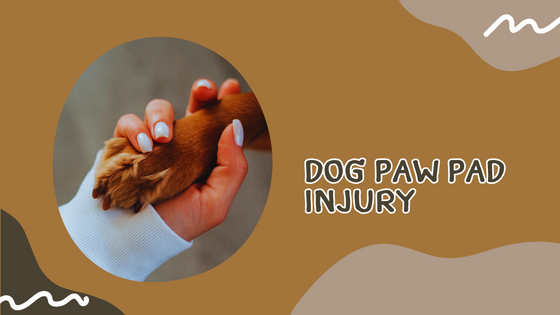A dog’s paw pads are as crucial to a dog as shoes are for humans. They protect their paws from harm such as different terrains, weather conditions, and other potential threats. However, just like our feet, a dog’s paw pads are susceptible to injury, which can cause a significant amount of distress to our furry companions.
Causes of Paw Pad Injuries
Dog paw pad injury can be caused by a number of things. One common cause is environmental hazards. During summer, high-temperature surfaces like pavement and concrete can cause burns. In winter, ice, snow, and de-icing chemicals can also be harmful.
Other dangers include sharp objects, allergenic plants, chemicals like pesticides, and specific types of flooring in our homes that may be abrasive to their paws. High-energy, playful activities can also lead to injuries due to worn-out pads or accidental trauma such as lacerations.
Symptoms of Paw Pad Injuries
Recognizing when your dog might have a paw pad injury is vital to ensure prompt treatment. Here are some indications to watch for:
- Limping or changes in gait: Dogs often favor their injured paw, which leads to an altered walking or running pattern.
- Visible wounds: Cuts, scrapes, blisters, or bruises on the paw pad are obvious signs of injury.
- Redness, swelling or bleeding: Any of these symptoms could signal an injury or infection that needs immediate attention.
- Chewing or Licking: Dogs often tend to lick or chew at their paw if it’s causing them discomfort.
- Changes in behavior or mood: Dogs may become whiny, anxious, or show signs of aggression if they are in pain.

Treatment Options
Once detected, paw pad injuries require immediate attention to prevent further discomfort, complications, or infections. Mild to moderate injuries like a small cut or abrasion might be able to be treated at home using pet-friendly antiseptics and bandages.
For deeper wounds, burns, and severe injuries, it’s best to seek veterinary care immediately. A veterinarian may clean and bandage the wound, prescribe antibiotics, pain relievers and may even recommend rest or reduced activity levels until the injury improves.
The vet might also provide booties or protective gear for your dog’s paws to prevent additional injuries and protect while healing.
Preventive Measures
Prevention is always better than a cure. Long walks on a hot day, running on rocky terrain, or walking on chemically-treated areas should be avoided. Regularly checking your dog’s paw pads for signs of wear and tear, cracks, or wounds can also help. Use dog boots or protective waxes when needed, for instance in extreme weather conditions.
In Conclusion
Ensuring paw pad health is a critical aspect of dog ownership. An understanding of these injuries, their symptoms, and treatment options can go a long way in ensuring your furry friend’s paws remain in good health and free from injury. Always remember, when in doubt, err on the side of seeking professional care. Your dog’s paws are essential for their playful activities and overall well-being.